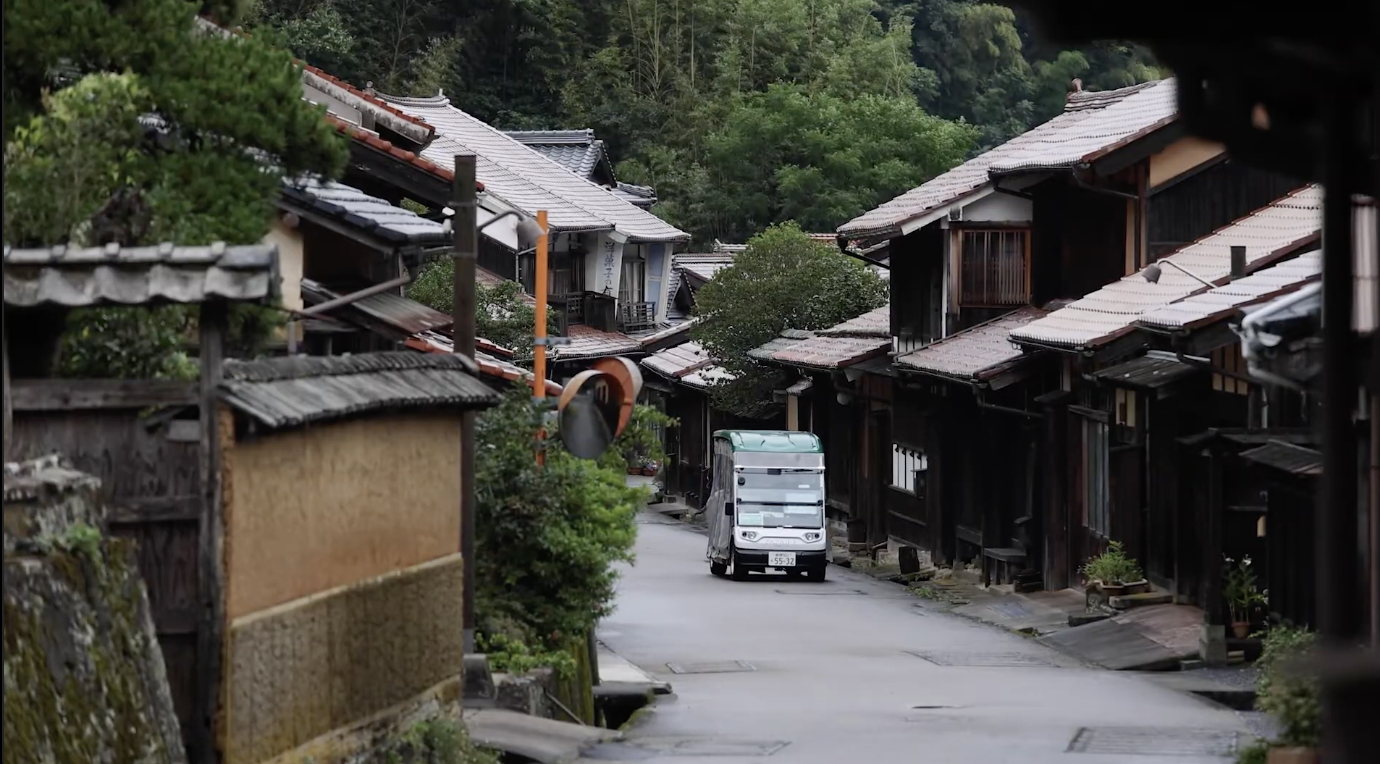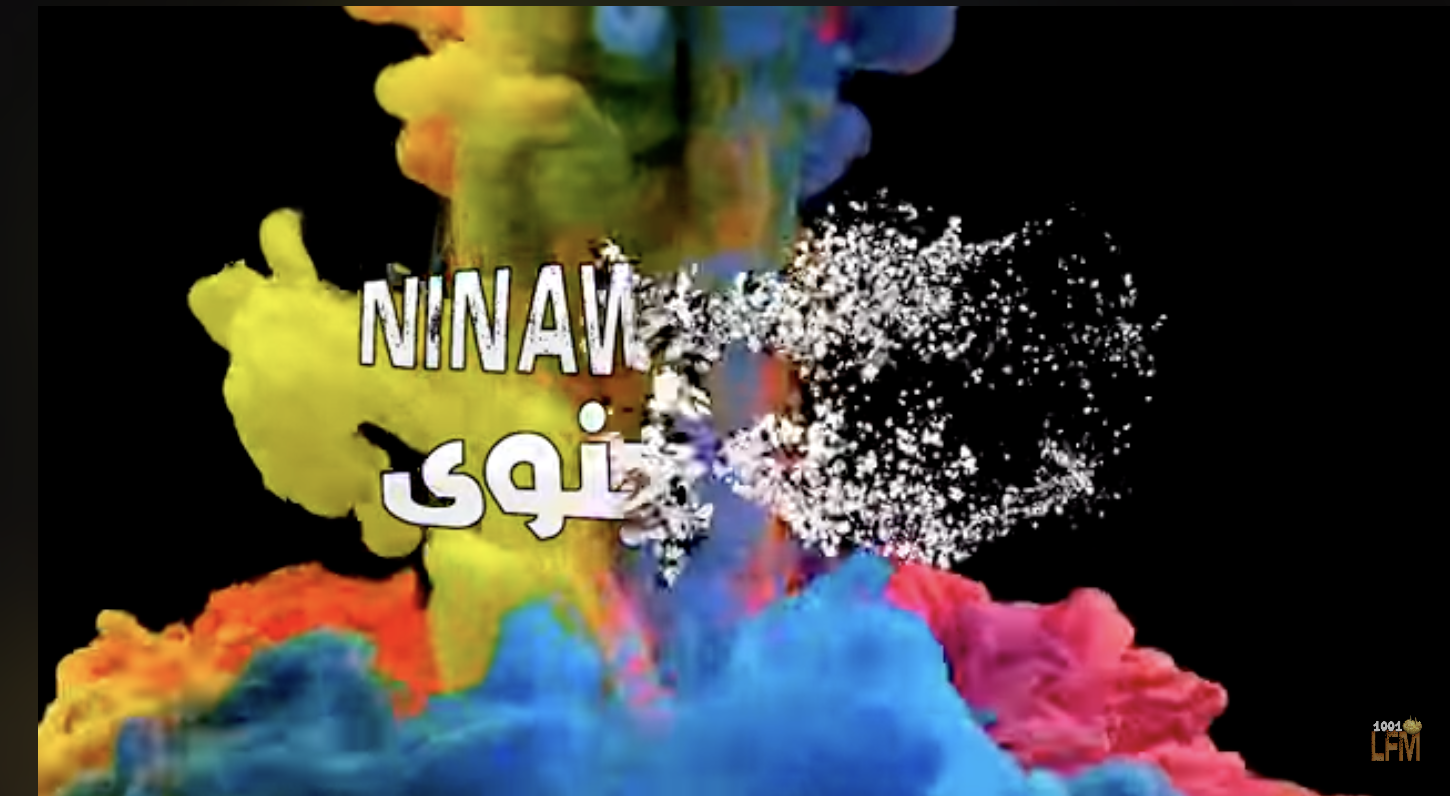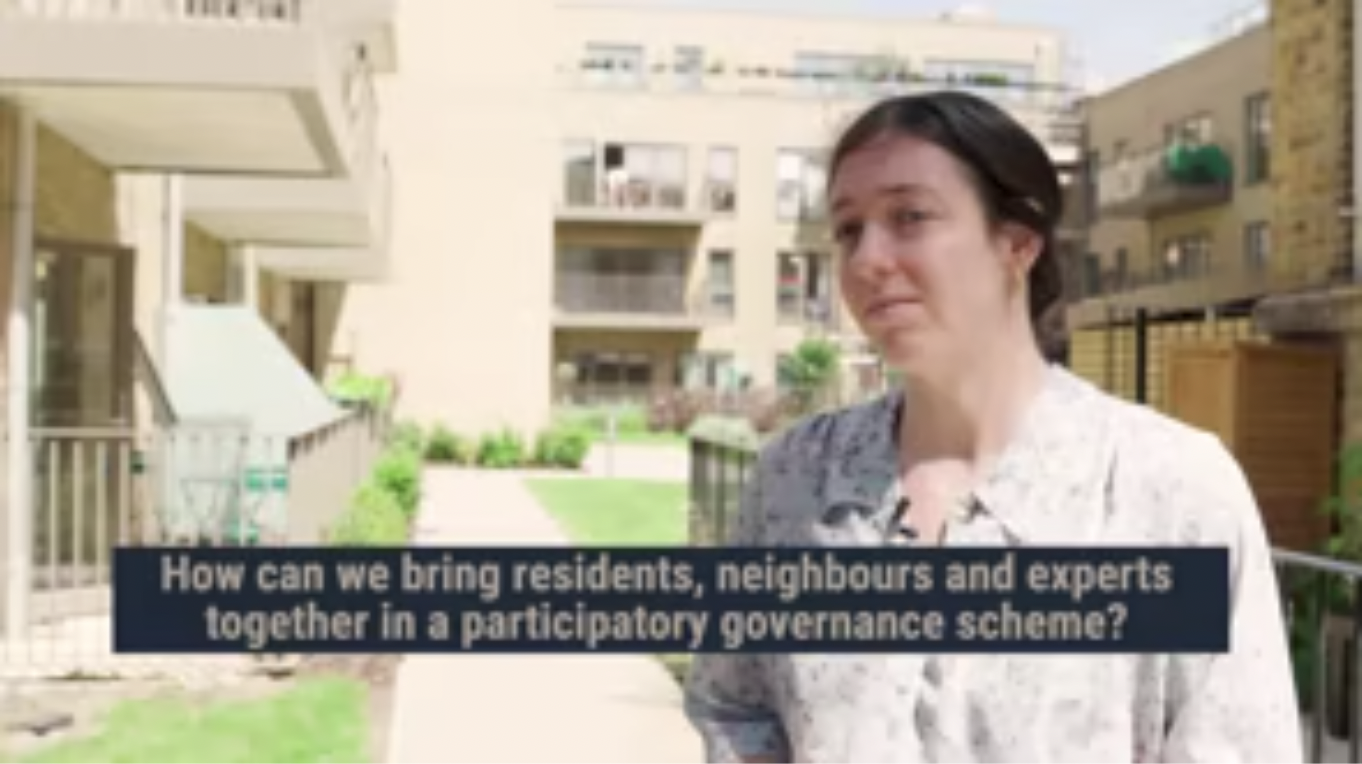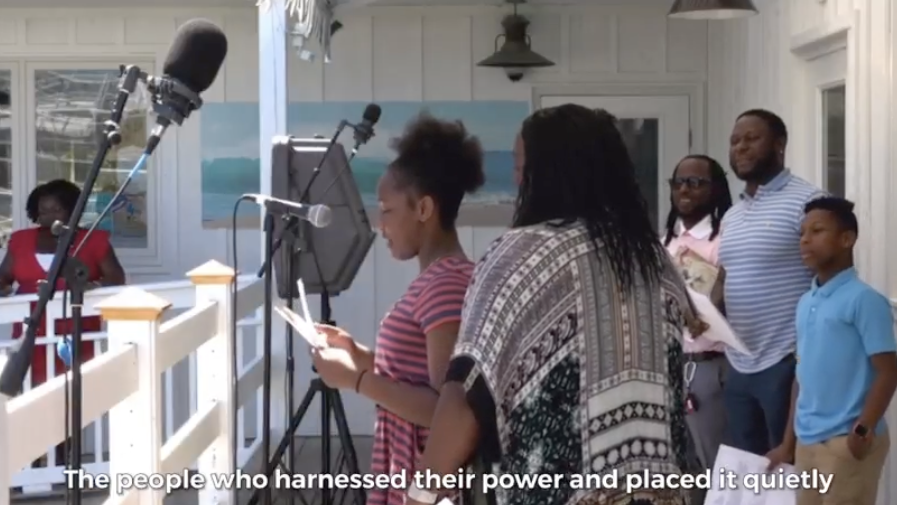OWHvoices video submissions
Fostering cultural and natural heritage today makes a gift to tomorrow. Share with us your practice and experience on how to better involve people in creating a more comfortable and inspiring cultural and natural environment! This year, 50 years after the birth of the UNESCO World Heritage Convention, we want to celebrate the people of your community that inspire conservation of places, and those whose life or work is dedicated to historical places and natural habitats. By gathering these stories of hands-on experiences of local communities, we want to create a co-learning platform about the applied practices of heritage conservation. Whether small or large, happy or sad, known or underrepresented, every story has value and can aid in heritage protection.
Local community's participation in the natural heritage site of Jeju Volcanic Island and Lava Tubes (Republic of Korea)
Submitted by: Heo Jin Yee
Keywords: Korea, Natural Heritage, Jeju, Sustainable Development, Community Participation
link to video
The Heritage of the People by the People: The Art Deco Precinct in Mumbai (India)
Submitted by: Abha Narain Lambah
Keywords: Art Deco, Victorian, Mumbai, Heritage
link to video
Living and working in a World Heritage town: Iwami Gizan Silver Mine (Japan)
Submitted by: Rui Miura
link to video
Chanderi as World Heritage: Culture, nature and wavers as a way of life (India)
Submitted by: Aruna Bagchee
Keywords: Community, Vernacular, Traditional, , culture, Heritage
link to video
Restoration of the Rongowhakaata IWI Landscape (New Zealand)
Submitted by: Diane Menzies
Keywords: story, land, people, connection, place
link to video
-
Turanganui-a-Kiwa, the harbour of Gisborne on the east coast of Te Ika-a-Maui, the North island of Aotearoa New Zealand connects this important place with the voyaging canoes from Te Moananui-a-Kiwa, the Pacific. The landfall of several canoes, whose stories are well known, such as the Horouta, the area is fertile, has been cared for since the 1300’s and is the home of Rongowhakaata. Their heritage is the land where tall forest trees grew in the well-watered soils, and where exemplary carving produced a house which has been the central exhibit of Aotearoa’s Museum Te Papa, having been previously stolen by the government. My Rongowhakaata heriatge is the stories, the land, the arts and the connections to the people through evenbts and genealogy. With currents threats to this heritage as across Aotearoa New Zealand of biodiversity loss, climate change and the degradation of water quality, Rongowhakaata iwi are working to restore riparian planting to stabilise river banks and the foreshore as well as develop advanced skills in landscape management.
The Dragon Garden at the Druk White Lotus School (Ladakh, India)
Submitted by: Tom Turner
Keywords: school garden, volunteering, cultural heritage
link to video - facebook
Budj Bim Cultural Landscape (New Zealand)
Submitted by: Damien Bell
Keywords: Indigenous, heritage, culture, landscape, land
link to video
The Sagarmatha National Park (Nepal)
Submitted by: Himalayan Trust
Keywords: Indigenous communities, sustainable tourism, community well-being, heritage management
link to video - facebook
-
Mt. Everest regularly features in global media. Together with the resident indigenous Sherpa people, it forms the main attraction of the Sagarmatha National Park (SNP), a UNESCO World Heritage site. Decades of visitor growth have caused wide-ranging societal change, transforming community well-being to the point where it is likely one of the World’s best examples of community well-being and development through tourism. The Himalayan Trust has been working for 60 years to enable community engagement in SNP and World Heritage management. Today we have 4 strategic programs in education, health, culture and livelihoods, management and governance. Recognizing that sustainable tourism policy advocates the imperative for tourism development to strengthen the host community's well-being, the Himalayan Trust partnered with Planet Happiness to enter the Our World Heritage “Transformational Impacts of Technology” competition. We were delighted to finish second. A project report highlights well-being outcomes and their relevance to World Heritage sites worldwide, especially those that are home to indigenous communities. This is emphasized as, in the words of the World Bank, “While Indigenous Peoples own, occupy, or use a quarter of the world’s surface area, they safeguard 80 percent of the world’s remaining biodiversity. They hold vital ancestral knowledge and expertise on how to adapt, mitigate, and reduce climate and disaster risks.”
The heritage walks of Ahmedabad (India)
Submitted by: Vivek Parmar
Keywords: Farm, Agriculture Landscape, Conservation, Heritage
link to video - instagram
The Euboeia historic landscape / Karystia South Evia (Greece)
Submitted by: Apostolatou Katerina
link to video
Premier Building, Hope Waddell Training Institution Calabar (Nigeria)
Submitted by: Tokie Brown
The Heritopolis Lunchtime Globinar - Africa Region Introduction (Mombasa, Kenya)
Submitted by: Arafat Mukasa
link to video
-
A round-the-world globinar on shaping future heritage policies for UNESCO. This video was played before the commencement of the panel discussion to set the stage for the discourse. The globinar was a preparatory event for MondiaCult 2022, UNESCO's World Conference on Cultural Policies and Sustainable Development. It will be held from 28 to 30 September 2022 by the Government of Mexico. To learn more about MondiaCult2022 and register, please visit https://www.unesco.org/en/mondiacult2022
The globinar addressed new heritage dimensions of the 21st century and was organized in three webinars (Asia.Pacific | Africa.Europe | Americas). Swahilipot Hub, together with National Museums of Kenya and Technical University of Mombasa represented Africa where we collectively contributed to global reflection using the case study of the cultural heritage of Swahili in the metropolis of Mombasa.
The panel discussion at which this video was present was themed "New generation identities in ancient cities." The panelists gave an account of how new identities such as built environment, languages like Sheng, and music like Genegetone are arising as a result of migration, gentrification, urbanization, and globalization. They also highlighted activities they are taking to promote and conserve cultural heritage such as through Modern Heritage of Africa (MoHoA) workshops to create awareness and generate interest in heritage, Friday Poetry, and contribution to Mozilla Foundation's Common Voice dataset for the Kiswahili language.
We invite you to join the Heritopolis. To learn more and join, please visit www.heritopolis.org
Cretan Horse institute (English)
Submitted by: Vera Klontza-Jaklova
Keywords: Living heritage; Horse as a cultural heritage; Horse as a historical heritage; Citizen science; Citizen activities; Citizens
link to video
-
This video describes the activities of the Cretan Horse Research, Rescue, and Horsemanship Center and the reasons for its existence.
Sabratha Old City One of the ancient three cities of Roman Tripolis, alongside Oea and Leptis Magna
Submitted by: Khaled Belhaj
Keywords: Sabratha; Roman Tripolis; Libya History
link to video
The Ninawa Operetta project
Submitted by: Younes Qays
Keywords: Ninawa Operetta اوبريت نينوى
link to video
-
مشروع اوبريت نينوى عبارة عن عمل فني متكامل (سمعي ومرئي) يهدف الى احياء التراث الحضاري و
الفولكلوري لمحافظة نينوى بمختلف ثقافاتها وفنونها ولغاتها. تحتوي محافظة نينوى على شرائح عديدة
متنوعة، لكل شريحة من هذه الشرائح لغتها الخاصة وعاداتها وتقاليدها وتراثها وازياؤها وفنونها ونمط
موسيقي ومناطق اثرية. يحاول مشروع الاوبريت ان يركز على هذه الشرائح من خلال شبابها المبدعين
والفنانين الذين سيساهمون بالغناء والعزف والتمثيل. بالاضافة إلى الفيديو الذي سيركز على مناطقهم التاريخية
وتراثهم وازياؤهم
(sorry there is no option to change the alignment)
-
The Ninawa Operetta project is an integrated artistic work (audio and visual) aimed at reviving the cultural heritage and the folklore of Nineveh Governorate, with its various cultures, arts and languages.
Ninawa Governorate contains many segments. Diverse, each of these segments has its own language, customs, traditions, heritage, costumes, arts and Musical style and archaeological sites. The operetta project tries to focus on these segments through its creative youth and the artists who will contribute by singing, playing and acting. In addition to the video, which will focus on their historical areas their heritage and costumes.
EEA Heritage award 2021
Submitted by: Manolis Klontzas
Keywords: heritage protection; local communities and heritage; cultural landscape; destruction of monuments; anthropocene and heritage
link to video
Open Heritage: London CLT and stakeholders OWHvoices 2022
Submitted by: Ulrika Stevens
Keywords: London, housing, community, benefitsociety, affordable
link to video
Open Heritage: Business Diversity at the ExRotaprint
Submitted by: Ulrika Stevens
Keywords: berlin, innovation, business, community, collective
link to video
-
A community owned former factory is redeveloped into a collective by its tenants. In this interview, we take a look at how various business concepts can be combined to ensure diversity in urban centers.
Open Heritage: Collaborative processes at the Färgfabriken
Submitted by: Ulrika Stevens
Keywords: stockholm, art, revitalization, platform, community
link to video
-
Färgfabriken is a cultural platform operating out of a former paint factory in Stockholm. In this interview, we take a look at how collaborative processes can be utilized to develop new concepts for the city and offer unique solutions to societal challenges.
Open Heritage: Promoting important issues, Largo Residências
Submitted by: Ulrika Stevens
Keywords: Lisbon, residence, tourism, community, socialaction
link to video
-
Largo Residências is a cooperative hotel and hostel in Lisbon. The organization is active vla cultural events and social services that have been transforming the neighborhood. In this interview, we take a look at how a cultural venue can act as a mediator between local initiatives and political forces to play a key role in bringing affordable housing and tourism regulations to the forefront.
Open Heritage: Transforming Public Space, The Stara Trznica
Submitted by: Ulrika Stevens
Keywords: community, Bratislava, market hall, revitalization, cultural events
link to video
-
Located in the heart of Bratislava, the Old Market Hall has been transformed into a multi-purpose venue. In this interview, we take a look at how residents and members of the community have played an active role in providing input for the transformation.
Mani’s Morning (Greece)
Submitted by: Kyriakos Zilakos, Ecological Cultural Movement in Mani (Greece)
Keywords: Greece, Mani, destruction, monuments, wind generators
link to facebook video
-
Ecological cultural movement if Mesa Mani - Mani's mourning
(Photo-video with sound of laments)They are destroying the evidence of Mani's history to put up wind turbines. They are destroying crucial evidence of Mani's history to install wind turbines. Already destroyed the "Bastounes" or "Vigles", which were fortified positions on the passes to the mountain tops, a kind of Acropolis of Mani, where the inhabitants fled for protection during enemy attacks. The sound is from an authentic lament in 1990. the sketches by Kostas Koufogiorgos and the graphic designs by Kostas Mariolis] EDITED BY KYRIAKOS P. ZILAKOS TO MOIROLOI
-
ΟΙΚΟΛΟΓΙΚΗ ΠΟΛΙΤΙΣΤΙΚΗ ΚΙΝΗΣΗ ΜΕΣΑ ΜΑΝΗΣ
Ο ΘΡΗΝΟΣ ΤΗΣ ΜΑΝΗΣ (foto-video με ήχο από μοιρολόι)
Καταστρέφουν τα τεκμήρια της ιστορίας της Μάνης για να βάλουν ανεμογεννήτριες. They are destroying crucial evidence of Mani's history to install wind turbines. Already destroyed the "Bastounes" or "Vigles", which were fortified positions on the passes to the mountain tops, a kind of Acropolis of Mani, where the inhabitants fled for protection during enemy aids. The sound is from an authentic lament in 1990. [Ο ήχος είναι από αυθεντικό μοιρολόι στην κηδεία της Μαρίτσας Μάγκουρα (Νικολάκαινα) το γένος Δριτσάκου από την Αρχόντω Καλκαντζάκου το γένος Λουκάκου στα Τσικαλια το 1996. Οι φωτογραφίες είναι από τον Κυριάκο Π. Ζηλάκο, τα σκίτσα από τον Κώστα Κουφογιώργο και τα γραφιστικά από τον Κώστα Μαριόλη] ΕΠΙΜΕΛΕΙΑ ΚΥΡΙΑΚΟΣ Π. ΖΗΛΑΚΟΣ ΤΟ ΜΟΙΡΟΛΟΪ
Urban Gardening - Bamberg's intangible cultural heritage
Submitted by: Tamara Winkhardt-Möglich
Keywords: Urban Gardening, World Heritage Site, Intangible Heritage, Tradition of Urban Horticulture, Bamberg
link to video
-
The Town of Bamberg was inscribed on the UNESCO World Heritage List in 1993 due to its medieval layout and its very well-preserved historic buildings. The Market Gardeners’ District with its inner-city cultivated areas is an integral part of the World Heritage Site. Urban horticulture has been practised here since the Middle Ages, right up to the present day.
Commercial horticulture has declined sharply in recent decades. As a result, large parts of the inner-city open space structures have fallen out of use. At the same time, new models of use such as self-harvest gardens and solidarity farming projects have emerged and historic liquorice cultivation revived. Old crops that are ideally adapted to Bamberg's climate and soil use being preserved for the future in a variety garden.
In several families, the next generation has now taken over the horticultural business. Some of these young people even have a seat on the city council to ensure that the interests of the gardeners get a hearing in the political arena.
Urban gardening is not a new trend in Bamberg, but looks back on centuries of tradition. The knowledge of growing and harvesting crops as well as seed propagation is passing down from generation to generation. This knowledge and skill is so valuable that it was included in the National Register of Intangible Cultural Heritage in 2016.
More info at https://welterbe.bamberg.de/en/.
Gärtnerei Mussärol
Submitted by: Serena Müller
Keywords: bamberg, bavaria, gardening, gärtnerstadt, zwb
link to video
Submitted by: Barbara Paca
Keywords: environmental justice; black history preservation; African American spirituals; intergenerational; intangible cultural heritage
link to video - instagram
-
Awarded with the Cultural Landscape Foundation’s inaugural Race and Space prize, The Water’s Edge Museum (WEM) is the first museum in the U.S. to honor the Founding Black Families of America. Situated in a fragile rural heritage area on the Eastern Shore of the Chesapeake Bay, Black history and the Underground Railroad happen in flood-prone areas–vulnerable, underserved societies further compromised by climate change and sea level rise.Home to Douglass, Tubman, and Garnet, WEM honors the people who utilized their strength, resilience, and genius to build America. Their legacies are the fabric of the museum as WEM seeks to empower young people to find their place in history and identify their own positive and unique voices when facing contemporary issues and challenges.Championing equity, WEM’s director was the first woman of color to run an art museum on the Eastern Shore, leading the community in innovative initiatives embracing intangible cultural heritage, history, and culture. Our mission includes establishing the UNESCO port marker documenting Oxford as the only Middle Passage stop on the Eastern Shore; Maryland’s first EJ* galleries; Climate Change gardens; and the Maryland Spirituals Initiative, weaving together music, culture, and preservation, where intergenerational choirs sing African American spirituals in historic buildings and landscapes.***The galleries are titled Environmental Justice as a Civil Right.**This has culminated with a history-making African American spirituals concert at Washington D.C.’s Cosmos Club’s ballroom, where there was a non-classical performance for the first time.
Submitted by: Ree Joseph
Keywords: intangible cultural heritage, empowering women, caribbean culture, botanical jewelry, heritage education
link to video - instagram
-
Traditional artisanship is one of the few intangible cultural skills that keep the twin-island state of Antigua and Barbuda’s heritage alive while binding our people to our African roots and dark history of enslavement.
The masterful handicraft of wild tamarind and jumbie bead seedwork was a dying art, with only five women left in the world to create it. Yet, it has outlived and transcended its challenging past, to be presented on a global stage, by Botaniqué Studios, with a message undeniably as profound as the craft itself.
Botaniqué Studios engages an intergenerational atelier of women to preserve this critical intangible cultural heritage unique to the Caribbean island nation. Our mission is to highlight that this craft is of such value that its preservation and development should be an essential element of efforts to enliven African culture among the diaspora.
Botaniqué organizes seedwork symposiums, creates digital documentation, and globally monetizes the wares to empower the youth and revive the eco-tourism seedwork promotes. While primarily building financial stability for the women artisans who have dedicated their lives to creating these wares and aiding in heritage protection by teaching the next generation.
Submitted by: Despina Dimelli
Keywords: traditional settlements, urban conservation, tourism, Crete Greece
link to video
The Central Experimental Farm (Ottawa, Canada)
Submitted by: Heritage Ottawa
Keywords: Farm, Agriculture Landscape, Conservation, Heritage
link to facebook video - facebook
-
The Central Experimental Farm is significant for its agricultural research, which contributes to Canada’s sustainability in a world confronted by the threat of climate change. The Farm is also a unique cultural landscape in Canada’s National Capital. For these reasons, the Farm was declared a National Historic Site. The Farm has made Canada one of the great powerhouses in world agriculture. For the last 40 years, scientists have studied the impact of climate change on agriculture here, contributing to the Intergovernmental Panel on Climate Change. The Farm is also treasured for its scenic qualities, its barns, greenhouses, arboretum and gardens. The Farm is threatened by urban encroachment. If we lose these sites, they cannot be replaced, research is threatened, and heritage is lost. The Farm is adjacent to the Rideau Canal World Heritage Site, and UNESCO has expressed concern for inappropriate development in proximity to the Canal. Legislative protection for the Farm is long overdue. Heritage Ottawa and others advocate for protection of the Central Experimental Farm. The federal government has, in partnership with Indigenous peoples, created an Indigenous resource centre here, as the Farm is on the traditional, unceded territory of the Algonquin Anishinaabe peoples.
Charlotte land trust
Submitted by: Katherine Lampton
Keywords:
link to video
Ecclesiastical District, St. John's, Newfoundland and Labrador (Canada)
Submitted by: John FitzGerald
Keywords: religious heritage, climate change, Newfoundland, North America
link to video
La Casona de Sojo, Sullana (Peru)
Submitted by: Adrian Antony Valles Seminario
Authors: Judith Elizabeth Morales Aguilar, Maria Alessandra, Brayan Ortiz, Jhon Brando Elera Erazo
Keywords: Creative, tolerant, responsible, enterprising, competitive
link to facebook video
El Pescado Creek Wetland (Plata, Argentina)
Submitted by: Daniela Rotger / Paisajes Anfibios
Keywords: Heritage, Transmission, Intangible, Traditional knowledge
link to video - instagram
-
TRAYECTORIAS ANFIBIAS
La comunidad del arroyo El Pescado nos inspira, con su sentido de pertenencia y su lucha sostenida para preservar los valores naturales y culturales del lugar. Desde la propia cuenca, situada en La Plata, Argentina, y para el mundo, el cortometraje Trayectorias Anfibias, realizado por investigadores de la Facultad de Arquitectura y Urbanismo de la Universidad Nacional de La Plata entre 2021 y 2022, retrata las distintas formas de vida que coexisten en el arroyo y su humedal, en sus encuentros y desencuentros.
La cuenca del arroyo El Pescado es la más extensa del partido de La Plata y la menos modificada. Su valor paisajístico y natural ha significado su designación como Paisaje Protegido de Interés Provincial (Ley 12247) hace ya unas décadas. Es parte del eje de crecimiento urbano que más se ha desarrollado en los últimos veinte años, pasando de ser una zona rural y de segunda residencia a un sector de vivienda principal, con un humedal continuamente amenazado por nuevas construcciones.
El Pescado es el único arroyo considerado Paisaje Protegido por Ley en toda la Provincia de Buenos Aires. Para que su protección sea real, estamos convencidxs que el primer paso es conocerlo. Aquí está!
-
Automatically translated:
AMPHIBIOUS TRAJECTORIES
The El Pescado stream community inspires us, with its sense of belonging and its sustained struggle to preserve the natural and cultural values of the place. From the basin itself, located in La Plata, Argentina, and for the world, the short film Trajectories Amphibians, made by researchers from the Faculty of Architecture and Urbanism of the National University of La Plata between 2021 and 2022, portrays the different forms of life that coexist in the stream and its wetland, in their encounters and disagreements.
The basin of the El Pescado stream is the largest in the La Plata district and the least modified. Its landscape and natural value has meant its designation as a Protected Landscape of Provincial Interest (Law 12247) a few decades ago. It is part of the axis of urban growth that has developed the most in the last twenty years, going from being a rural area and a second residence to a main housing sector, with a wetland continually threatened by new construction.
El Pescado is the only stream considered Landscape Protected by Law in the entire Province of Buenos Aires. For your protection to be real, we are convinced that the first step is to know it. Here it is!
Submitted by: Priscila Mello
Keywords: pedagogía museística, educación, patrimonio, aprendizaje
link to video - instagram
-
El proyecto Pedagogía Museística, consta en la generación de una categoría de recursos educativos abiertos, llamada Objeto de Aprendizaje (OA), que posteriormente son publicados en repositorios educativos.
El objetivo del presente, es el de visibilizar a través de la creación de los recursos educativos abiertos accesibles, el patrimonio tangible e intangible local y regional, por medio de los objetos existentes en el Museo del Patrimonio Regional de Rivera - IDR y así enseñar con las posibilidades que este nos brinda. El mismo, se encuentra registrado en el banco de proyectos Iberoamericano, que registra buenas prácticas culturales llevadas a cabo en distintos países, hasta el presente el mismo es el único registrado en la región norte del país.
A través de la información, contenida en esos recursos, se conoce por medio de un recorrido virtual, la historia de lugares y personas; con ellos se aprende que somos sujetos de derecho, con acceso a la educación y cultura, participación social y a su vez con deberes como el de la conservación de los lugares que resultan en la conservación de la memoria y la identidad cultural colectiva.
The Loss of Historical and Cultural Value of the Casona San Miguel (Piura, Peru)
Submitted by: Mercedes Hiroko Martinez Iwasaki
Keywords: Cultural Heritage, Casona San Miguel, Piura - Peru, Research Work
La Perdida de Valor Histórico y Cultural de la Casona San Miguel
Presentado por: Mercedes Hiroko Martinez Iwasaki
Palabras clave: Patrimonio Cultural, Casona San Miguel, Piura - Peru, Trabajo de Investigación
link to video
-
Cultural heritage is all that tangible or intangible legacy inherited from our ancestors which generates identity, prestige and strengthens the culture of a society currently in the city of Piura has a great cultural heritage of extraordinary wealth and monumental evidence bounded to the north by the avenue San Teodoro to the south along Bolognesi Avenue, to the east along the Eguren boardwalk and to the west along Loreto Avenue, within the town we find monuments dating from the sixteenth century, which are expressions of colonial and republican architecture. In this opportunity, we have as an object of study the historical and cultural revaluation of the mansion San Miguel one of the most important mansions of the eighteenth century in the city of Piura this mansion was built in the colonial era of the city in order to merge first in seventeen eighty-three as a cloister of priests and later in eighteen hundred and thirty-five to merge as the college S an Miguel or better known as the old seminary school of El Salvador was built in Adobe Quincha and where educational and religious activities of approximately two hundred years of Piuran history were witnessed when studying and analyzing the building we have observed that it is in a state of abandonment since it presents deficiencies in its infrastructure and in its cultural diffusion presents the intervention of agents or pathologies caused by nature and by man, which drastically affect its infrastructure, bringing with it seventy percent of its first level and ninety-five percent of its first level. almost non-existent evidence of the second level highlight that despite its lack of maintenance or intervention of the authorities and the population to conserve what still exists, this house is still considered as a monument of greater representation of the historic center of Piura that is why we must intervene for the reconstruction and conservation of the San Miguel mansion that the authorities generate efficient management and intervention plans, in addition to compliance with the regulations that protect cultural heritage, achieving efficient education and dissemination of culture and history of the monument. Finally, we call on the entire Piuran society to become aware and improve our actions. Let us take care of what we have inherited in order to achieve a better cultural identity. An urban order is achieved within the city, economic, cultural and social development, increase tourism and mainly a better quality of life for Piurans.
Mampuján Patrimonio de la Humanidad (Cartagena de Indias, Colombia)
Submitted by: Dayana Rocha Pulido
link to video
Quebrada de Humahuaca, Argentina
Submitted by: Josefina Ocampo
link to video
Submitted by: Arquimedes Federico
Keywords: ciudadano, área patrimonial, barrio, residencial, destrucción
please submit link again :)




































